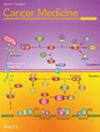Multidimensional Healthcare Access Barriers to Prostate-Specific Antigen Testing: A Nation-Wide Panel Study in the United States From 2006 to 2020
Abstract
Background
Rising metastatic prostate cancer incidence has renewed debate regarding benefits of prostate-specific antigen (PSA) screening. Identifying barriers to accessing screening for individuals at high risk of lethal prostate cancer may slow this rise. We examined associations of access barriers with receipt of PSA testing, stratified by sociodemographic factors.
Methods
We pooled data from male respondents to Behavior Risk Factor Surveillance Systems (BRFSS) surveys from 2006 to 2020. Questions related to affordability (insurance, cost of visits) and accommodation (regular primary care provider (PCP), physician recommending a PSA test) were considered as individual-level barriers. For availability, we linked provider density from the 2012 Area Health Resource File and estimated driving times to closest health facility within Micropolitan and Metropolitan Statistical Area (MMSA) using Google Earth Engine. These measures were used to compute a spatial accessibility index. We fit survey-weighted, covariate-adjusted logistic regression models to estimate associations of barriers with receipt of PSA within the past 2 years and examined effect modification by sociodemographic factors.
Results
There were 185,643 participants, of whom 73% were White, 11% were Black, 4% were Asian, and 11% were Hispanic. Physician recommendation was the strongest predictor of having a PSA test (aOR: 14.5, 95% CI: 13.6, 15.6). Not having a regular PCP (aOR: 0.29, 95% CI: 0.27, 0.31), insurance (aOR: 0.64, 95% CI: 0.58, 0.71), and prohibitive cost of care (aOR: 0.82, 95% CI: 0.75, 0.90) were associated with lower PSA testing. Access barriers were stronger predictors of PSA testing for Asian and White participants compared to other groups (Phet < 0.004 for insurance and regular PCP) and for those with college education compared to those without (Phet < 0.05 for insurance, perceived unaffordability).
Discussion
Physician recommendation was the strongest predictor of receipt of PSA testing, regardless of sociodemographic grouping. Future studies should consider access barriers jointly and across sociodemographic strata.

 求助内容:
求助内容: 应助结果提醒方式:
应助结果提醒方式:


